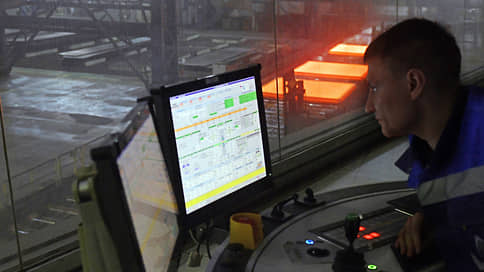Russian steel exports to China fall after last year’s growth
[ad_1]

Exports of Russian ferrous metals to China in 2023 returned to minimal pre-crisis levels. Shipments of semi-finished steel products, the growth of which was observed last year, decreased several times against the backdrop of low prices in China relative to other markets. Chinese metallurgists themselves are increasing exports due to weak demand in the domestic market, and analysts do not expect the situation to improve in 2024.
In January-October, Russia reduced the export of semi-finished steel products to China by 3.4 times, to 658 thousand tons, according to Chinese customs data. In monetary terms, exports fell four times, to $300 million. Supplies of all types of Russian ferrous metal products (not only semi-finished products) also decreased three times, to $576 million. The main share in semi-finished products is occupied by slab, which is used to produce flat products. Metallurgical companies of the Russian Federation did not provide comments.
In 2022, Russia sharply increased supplies of steel products to China against the backdrop of European sanctions. The Association of Ferrous Metallurgists “Russian Steel” stated in April last year that 4 million tons of steel need to be redirected to the eastern direction. The owner of NLMK, Vladimir Lisin, said in June 2022 that China is a difficult destination for metallurgists due to logistics and freight costs. “We deliver there at the cost level, despite the fact that they have their own surplus of steel production. Taking into account the rising cost of transport, supplies to Asia are prohibitive for many enterprises,” he said. Despite this, exports of semi-finished products to China tripled in 2022, to 2.3 million tons.
However, this year, a slowdown in demand for steel on the Chinese market squeezed out Russian supplies and forced local metallurgists to increase exports themselves. According to Platts, Chinese steel exports in 2023 will approach the highest level since 2016 of 90 million tons. Steel production will also increase by 16 million tons, to 951 million tons. Some Platts sources expect the situation of high steel production and low domestic demand to continue into next year. In January-November, steel imports fell by 29.2% compared to the same period last year, to 6.98 million tons, writes Platts.
According to Kommersant’s interlocutors, China has never been a marginal market for slabs. Moreover, Chinese companies are difficult negotiators. Based on data from the industry agency Metals & Mining Intelligence (MMI), slab prices in China are indeed lower than in other markets: $465–475 per ton on CFR terms versus $550–620 CFR in Europe and $505–515 CFR in Turkey.
An increase in Chinese exports could put pressure on Russian metallurgists. China now exports hot rolled products and thick sheets to Turkey and the Middle East, comments Boris Krasnozhenov from Alfa Bank, and in these product niches it can compete with Russian manufacturers. The volumes of Chinese exports are not so significant on the scale of China, but they are a serious factor in the balance of world trade in steel products. This may explain the lack of positive dynamics in steel prices in the second half of 2023. However, says Boris Krasnozhenov, Russian metallurgists, due to effective vertical integration, remain one of the most profitable in the world and can withstand competition with exporters from China. He also believes that global steel demand will continue to grow in 2024 on the back of infrastructure construction.
[ad_2]
Source link





